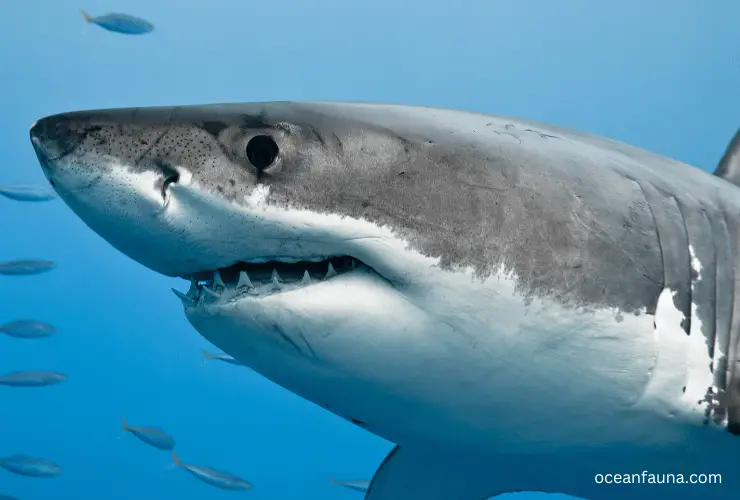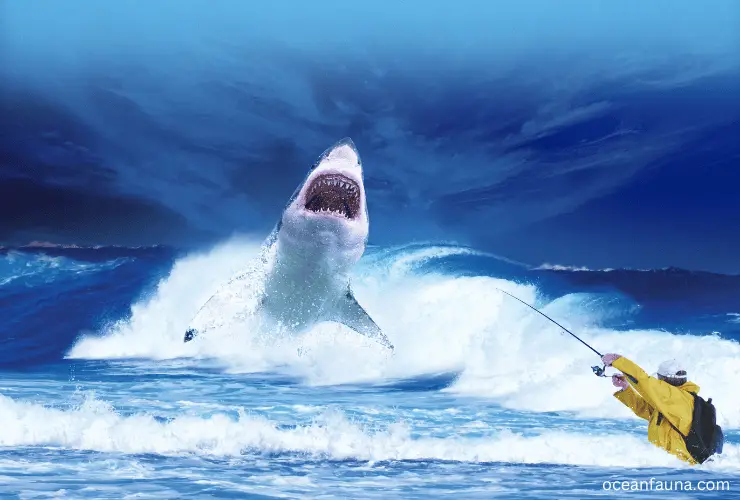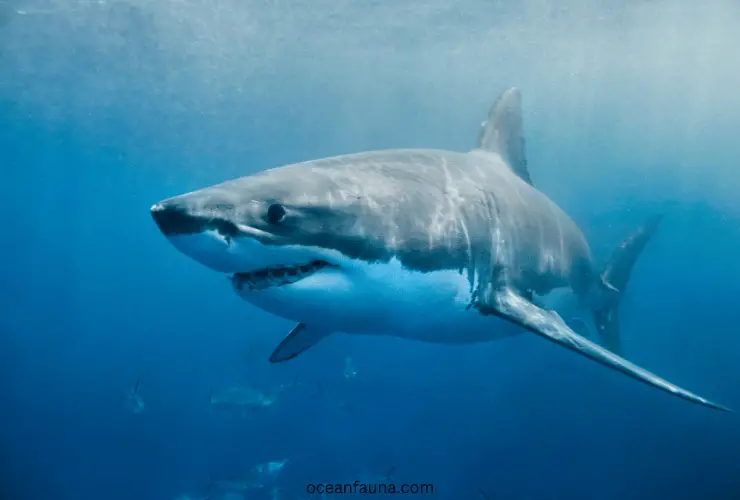If you are planning to visit Turkey, you might have a question: Are there sharks in Turkey? Well, there are plenty of sharks in Turkey. Some say around 50 shark species are there, including hammerhead and great white sharks.
However, in this article, I will discuss in detail some of the common turkey sharks, including some safety cautions.
Oceanic Geography of Turkey
The oceanic geography of Turkey is defined by the four seas surrounding the country, namely the Mediterranean, Aegean, Sea of Marmara and the Black Sea. Each of these seas has unique characteristics that have influenced the history and culture of the region.
The Mediterranean Sea
The Mediterranean Sea is located to the south of Turkey and is considered a vital source of commerce, industry, and tourism for the country. The Mediterranean climate and rich biodiversity have made Turkey a popular tourist destination for many years.
The coastline of the Mediterranean is a popular hub for yachting, cruising, and swim tours. The sea is also home to numerous species of marine life, including dolphins, sharks, and sea turtles. The Blue Flag certification, awarded to high-quality beaches and marinas, has been presented to numerous beaches on Turkey’s Mediterranean coast.
The Aegean Sea
The Aegean Sea, located to the west of Turkey, has played a significant role in the country’s history and culture. The ancient city of Troy, a UNESCO World Heritage Site, was situated on the Aegean coast of Turkey.
The Aegean coastline is also characterized by numerous coves and islands that are known for their beauty. The sea is also home to a variety of marine life, including seals, dolphins, and sea otters.
The Sea of Marmara
The Sea of Marmara is a small sea located between the European and Asian continents. The sea is connected to the Black and Mediterranean Seas via the Bosphorus Strait and the Dardanelles Strait.
The Sea of Marmara is a vital shipping route connecting the Black Sea to the Mediterranean and beyond. The coastline of the Sea of Marmara is a popular destination for tourism, with a rich cultural and historical heritage. Istanbul, Turkey’s largest city, is located on the shores of the Sea of Marmara.
The Black Sea
The Black Sea, located to the north of Turkey, is the largest sea in the region. It is the world’s second-largest body of water that is completely enclosed by land. The Black Sea is known for its unique marine life, including sharks, swordfish, mussels, and sturgeon.
The coastline of the Black Sea is characterized by numerous beaches that are popular with tourists. The climate in this region is continental, with warm summers and cold, snowy winters.
Which Sharks Are There in Turkey?
You already know about the complete oceanic geography of Turkey. Let’s know which sharks are common in which ocean zone.
Turkey has a diverse range of shark species inhabiting its four seas. Below is a list of the sharks found in Turkey, along with their respective sea zones:
Great White Shark – Mediterranean and Aegean Sea

The Great White Shark is a notorious predator known for its sharp teeth and immense size. Although rare, these sharks can be found in the Mediterranean and Aegean Seas, particularly around the southern coast of Turkey. Great White Sharks can grow up to 6 meters in length and are known to feed on seals, sea lions, and other marine mammals.
Hammerhead Shark – Aegean and Mediterranean Sea
The Hammerhead Shark is a distinctive species known for its peculiar head shape that resembles a hammer. This type of shark can be found in both the Aegean and Mediterranean Seas, particularly near the coasts of southern Turkey. Hammerhead Sharks can grow up to 5 meters long and are known for their impressive hunting abilities.
Common Smoothhound Shark – Sea of Marmara and Aegean Sea
The Common Smoothhound Shark is a species of shark found in the Sea of Marmara and the Aegean Sea. This type of shark can grow up to 2 meters in length and feed on smaller fish, crustaceans, and squid. Common Smoothhounds are known for their docile nature and can often be seen swimming near the surface.
Basking Shark – Mediterranean Sea and Aegean Sea
The Basking Shark is a species of shark found in the Mediterranean and Aegean Seas around the southern coast of Turkey. This type of shark can grow up to 12 meters long and is known for its filter-feeding habits. Basking Sharks feed on large quantities of plankton and small fish, making them an important part of the marine ecosystem.
Sand Tiger Shark – Aegean and Mediterranean Sea
Also known as the Grey Nurse Shark or Spotted Ragged Tooth Shark, the Sand Tiger Shark is a unique species inhabiting the Aegean and Mediterranean Seas. These sharks can grow up to 3 meters in length and are known for their needle-like teeth and jagged appearance.
Blacktip Shark – Mediterranean Sea
The Blacktip Shark is a small but feisty species that can be found in the Mediterranean Sea, particularly near the southern coasts of Turkey. These sharks are known for their black-tipped fins and can grow up to 2.5 meters long.
Bluntnose Sixgill Shark – Black Sea
The Bluntnose Sixgill Shark is a rare species found only in the deep waters of the Black Sea. These sharks can grow up to 5 meters long and are known for their blunt snout and formidable appearance.
Sandbar Shark – Aegean Sea
The Sandbar Shark is a common species found in the warmer waters of the Aegean Sea. These sharks can grow up to 2.5 meters in length and are known for their gentle nature towards humans.
Spinner Shark – Mediterranean Sea
The Spinner Shark is a unique species found only in the Mediterranean Sea, particularly near the southern coasts of Turkey. These sharks can grow up to 3 meters in length and are known for their impressive aerial displays.
Spiny Dogfish Blue Shark – Aegean and Mediterranean Sea
The Spiny Dogfish Blue Shark is a medium-sized species found in both the Aegean and Mediterranean Seas. These sharks can grow up to 1.5 meters long and are known for their spiny skin texture and blue-grey colouration.
Angel Shark – Aegean Sea
The Angel Shark is a flat-bodied species found in the warmer waters of the Aegean Sea. These sharks can grow up to 2 meters in length and are known for their angelic appearance and gentle nature.
Copper Shark – Aegean Sea
The Copper Shark is a small but fearsome species found in the waters of the Aegean Sea. These sharks can grow up to 1.5 meters long and are known for their copper-brown colouration and aggressive behaviour.
Thresher Shark – Aegean and Mediterranean Sea
The Thresher Shark is a large species found in both the Aegean and Mediterranean Seas. These sharks can grow up to 6 meters in length and are known for their elongated tail fins that they use to stun their prey.
Do Sharks Attack in Turkey?
Shark attacks in Turkey are not common, but they do occur. Between 1931 and 1983, 13 shark attacks were recorded in Turkey’s waters, most of which occurred in the Sea of Marmara. Out of the 13 attacks, 10 (76.9 %) were recorded in the Sea of Marmara, followed by 2 in the Mediterranean and 1 in the Aegean Sea.
In over half of the attacks (53.8%), the targets were fishing boats, most of which were tuna handliners. This could be attributed to shark activity in the vicinity of aquaculture cages located along Turkey’s Aegean and Mediterranean coasts, as seen in the Güllük Bay incident.
Furthermore, in 46.2% of the recorded attacks, sharks went after humans directly. Most of the attacks were on swimmers, skin or scuba divers who caught fish with a harpoon. Two of the attacks resulted in fatalities, making it crucial to be aware of these risks while enjoying Turkey’s beautiful coastal waters.
Despite the lack of recorded attacks in recent years, it is crucial to remain vigilant and follow safety guidelines while swimming, diving, or participating in any water activities.
While threats to public safety caused by predator aggregations close to shorelines are still unknown, it is better to err on the side of caution and follow any precautionary measures implemented by authorities.
Is It Safe from Sharks for Diving in Turkey?
Regarding my previous discussion about shark attacks, it is safe to say that Turkey is a suitable country for diving. Although there have been some reported incidents, they are infrequent and do not pose a significant risk to divers.
According to the Turkish Ministry of Culture and Tourism, most of the waters around the country are generally considered safe for diving. This is because Turkey is located in the Mediterranean, which is not a typical habitat for most shark species. The Mediterranean waters around Turkey do not provide the necessary temperature, food sources and breeding grounds most sharks require.
There have been some reported sightings of sharks along the Turkish coast, particularly in the southern part of the country. However, these sightings are rare, and the sharks are usually small, non-threatening species such as basking sharks or dogfish.
In addition, the Turkish authorities and diving centres have put safety measures and precautions in place to minimize any shark attack risks.
In terms of shark attacks in Turkey, they are extremely rare and fatalities are even more so. In fact, there have only been a handful of recorded incidents involving sharks in Turkish waters over the past few decades.
Most of these incidents involved swimmers or beachgoers rather than divers. While these incidents are still regrettable, they highlight the fact that the chances of a shark attack while diving in Turkey are very low.
Diving with Turkish Shark: Best Time to Come

If you plan to go diving with Turkish sharks, you must know the best time to come. Generally, diving with sharks can be a thrilling and adventurous experience but choose the right season to ensure a safe and successful dive.
The best time to go diving with Turkish sharks is between April and October. The water temperature is pleasant during this period, and the weather is favourable. The water temperature ranges between 23 and 28 degrees Celsius, allowing divers to spend more time in the water without getting uncomfortably cold.
Moreover, the waters around Turkey are generally calmer during this period, which makes for easier and safer diving conditions. The clear and calm conditions make spotting and tracking the sharks easier while minimizing potential risks.
The summer months (June to August) tend to be the most crowded with tourists worldwide. Therefore, if you want to enjoy quieter dives, scheduling your dive trips in the shoulder season between April and May or September and October is best.
In addition to the ideal season, choose the right dive operator and get proper training to ensure a safe and enjoyable dive. Diving with Turkish sharks is undoubtedly an unforgettable experience that offers a rare opportunity to explore the beauty and diversity of marine life.
Furthermore, with the right preparations and timing, you can make it a safe and fulfilling experience.
Which Safety Cautions Must Be Followed for Diving in Turkey?
Although the chances of a shark attack while diving in Turkey are low, divers should still take some basic safety precautions. These include:
1. Always dive with a partner and always remain in visual contact.
2. Be aware of any potential dangers, such as strong currents, reefs or other hazards.
3. Avoid swimming near bait fish or schools of fish – these are known to attract sharks.
4. Do not wear shiny jewellery, bright clothing or reflective items, as this may attract the attention of sharks.
5. Follow local regulations and advice from dive centres about shark encounters.
6. Keep any non-diving activities away from areas where divers are likely to be present.
7. Most importantly, respect the environment and maintain a safe distance from all marine life when diving in Turkey.
Overall, while sightings of sharks are possible while diving in Turkey, the chances of a shark attack or other incident occurring are very low. By following the basic safety precautions outlined above, divers can ensure that their underwater time is enjoyable and safe.
Conclusion
Hopefully, you know clearly all the common sharks living in the Turkish sea zone. Some of them are very deadly, while others are harmless.
Nonetheless, it is always a must to remember the safety precautions while diving in Turkey and respect all marine life. With the right preparations and timing, you can have a fantastic scuba-diving experience with incredible sights of the Turkish underwater world, including its fascinating shark diversity.

